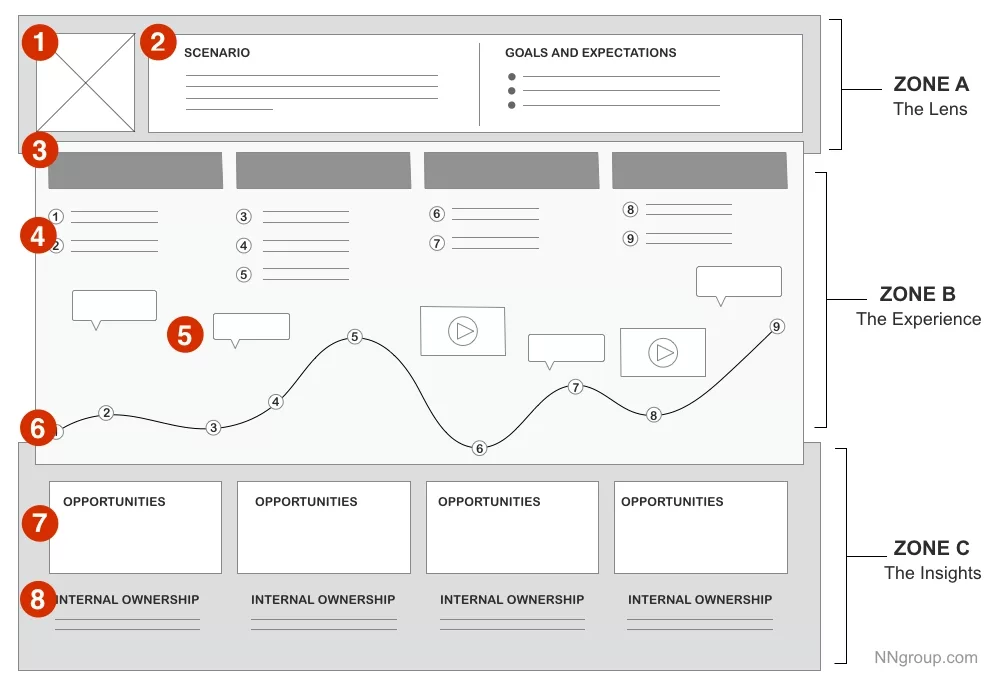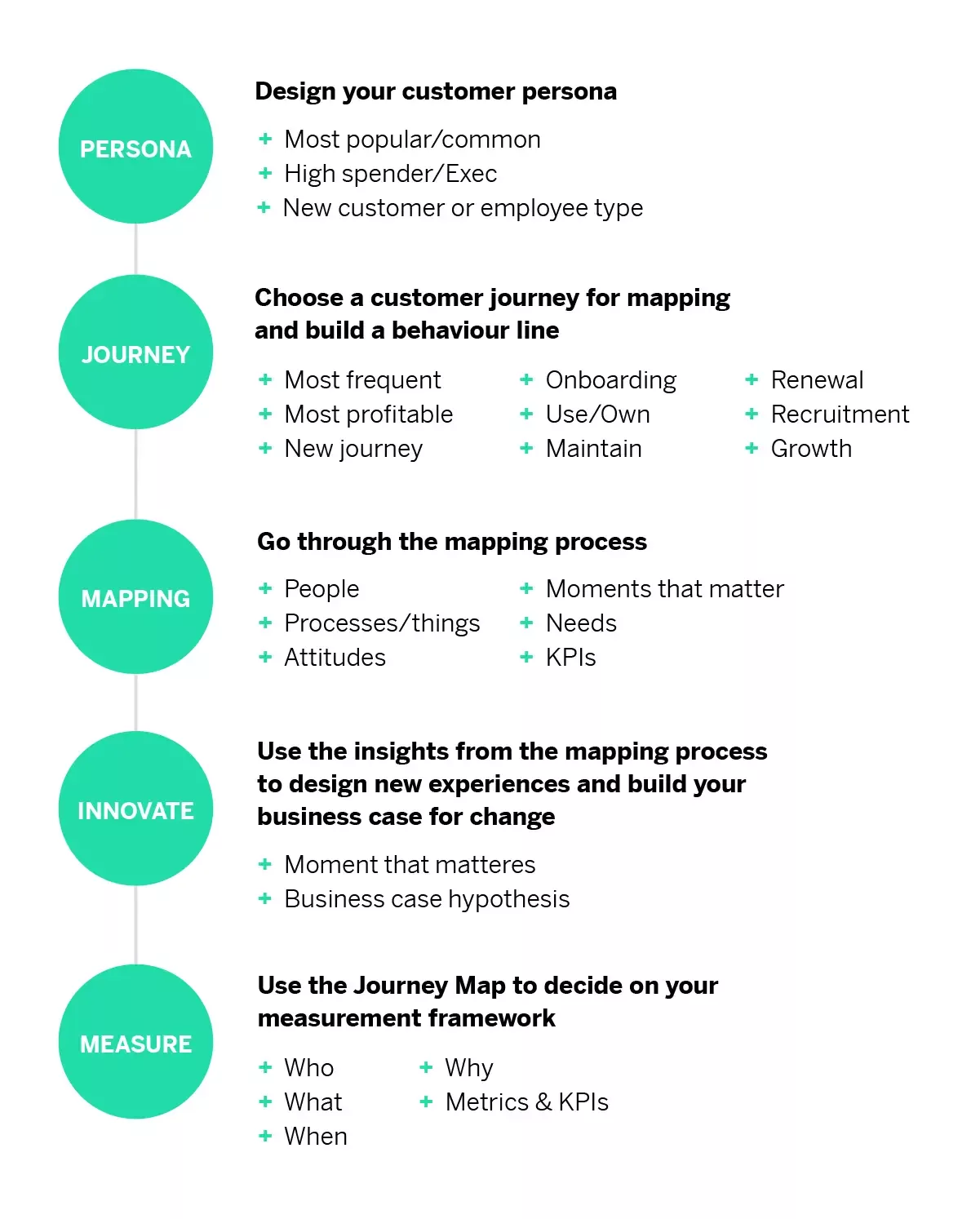How to create a Journey Map
A five step process for creating a user journey map.
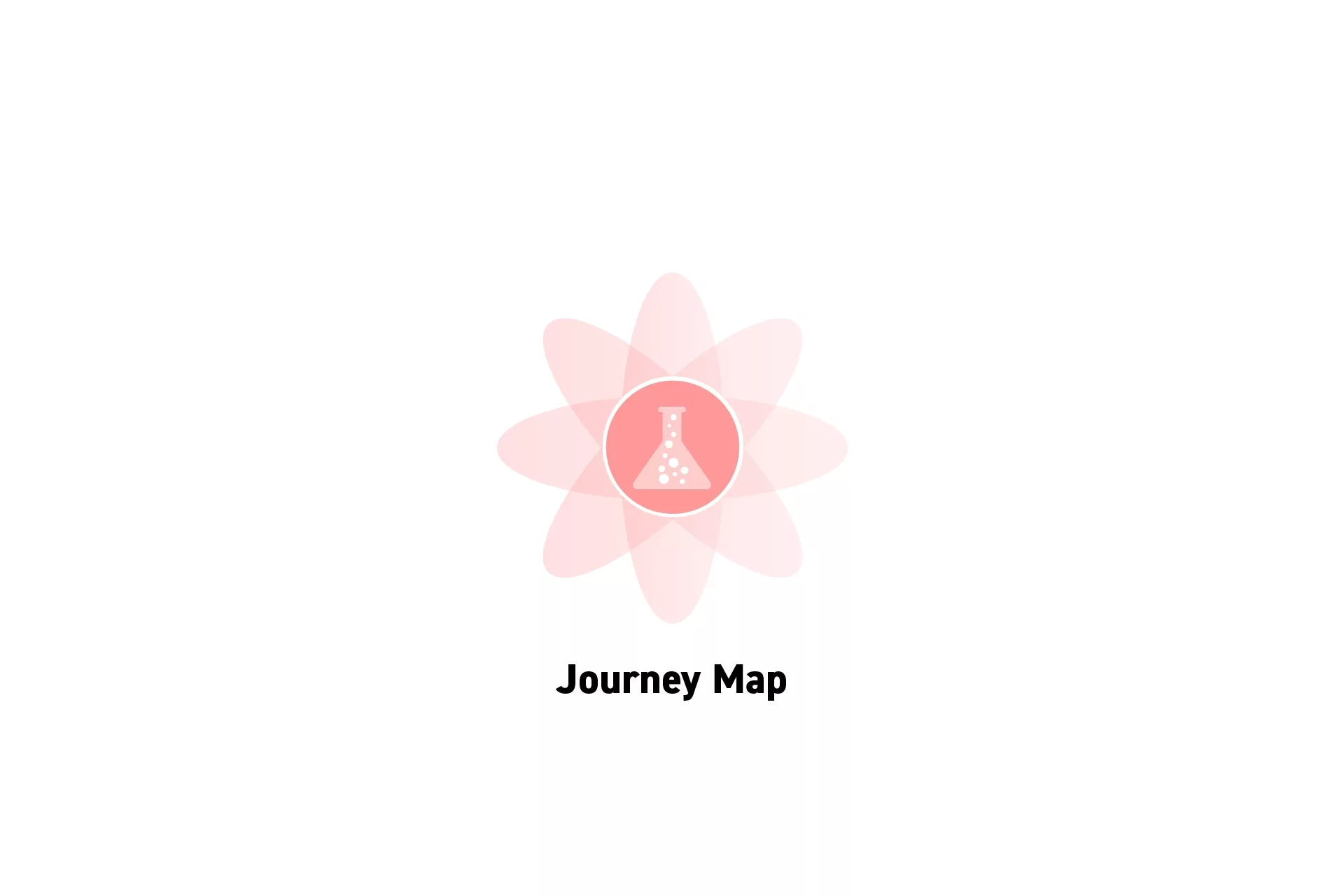
A five step process for creating a user journey map.
SubscribeJourney maps, which are also known as user journey maps or customer journey maps, are visualizations that individuals and organizations use to gain a better understanding of how a customer or user behaves around and within a product, service or experience.
Examples of Journey Maps
Journey maps, user journey maps or customer journey maps take many forms. Here are some examples.
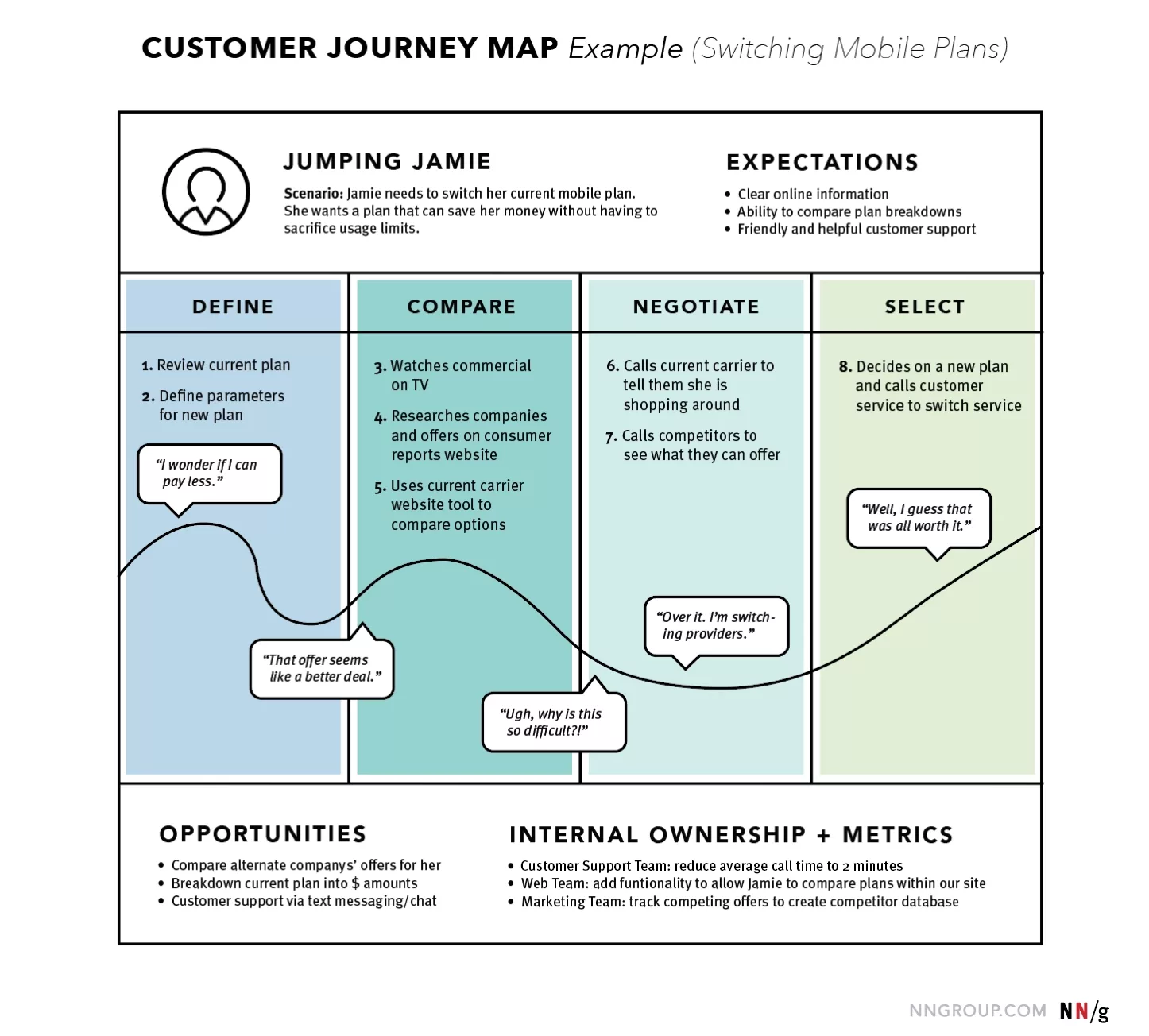
An example of a simplistic, high-level customer-journey map depicting how the persona “Jumping Jamie” switches her mobile plan by the Nielsen Norman Group.
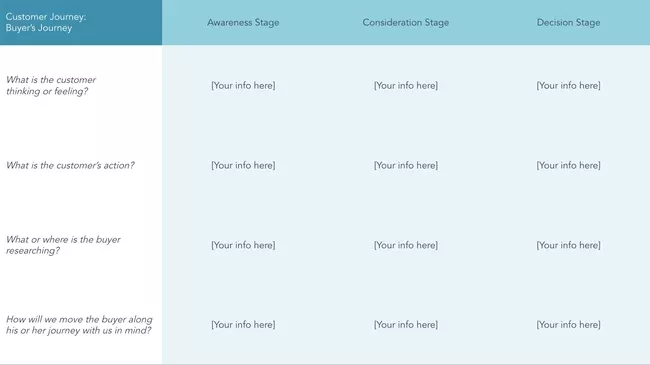
Hubspot's example of a journey map for a buying process.
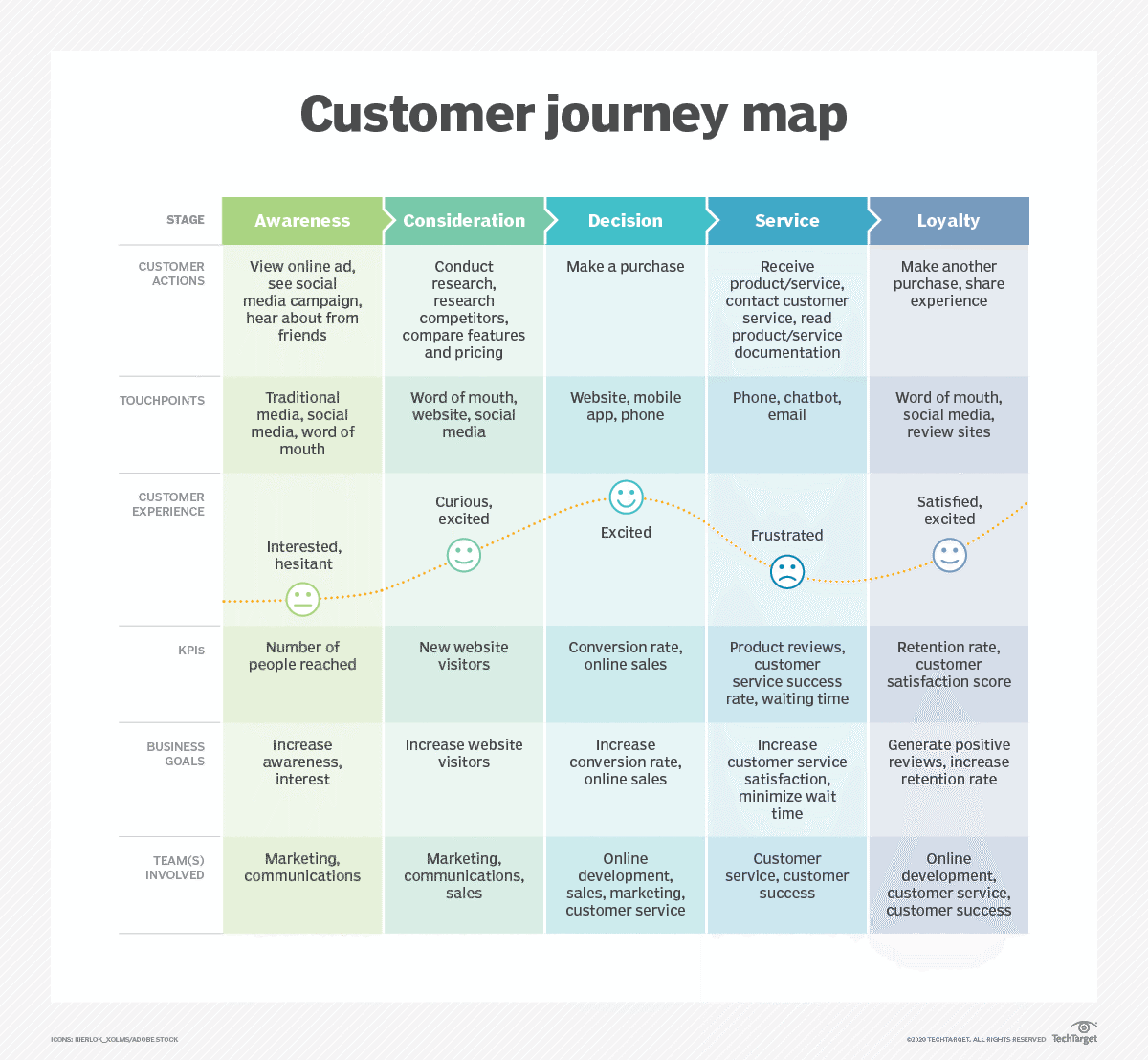
Tech Target's example of a purchase customer journey.
How to create a Journey Map
Before starting we recommend that you familiarize yourself with the structure of a journey map.
Step One: Write a Hypothesis
In order to create a journey map, you must define the problem that you are trying to solve or the idea that you want to validate.
Please note that this hypothesis could relate to an existing feature, product, service or experience and could pertain to an entirely new creation or an addition to an existing creation.
Step Two: Define the target audience
Journey maps are intended to help you gather an in-depth understanding of how a member of your target audience uses your product, service or experience and the story that unravels around it.
In order to know who to map, you must define your target audience.
Step Three: Carry out the Research
Perform user research, desk research and carry out interviews.
Before you interview the individuals make sure to keep in mind that you will create personas for each of them and that you will map their journey into a shared structure to be able to draw common conclusions and insights that belong to the target audience when using your product, service or experience.
We strongly recommend that you interview the user or focus group about the jobs that they do in relation to the field that you are seeking to bring a product, service or experience to. These jobs may reveal gaps in the market that could be fulfilled by your business as a means to enhancing the lives of the users.
To learn more consult the Harvard Business School article linked below.
"Zone A: The lens provides constraints for the map by assigning (1) a persona (“who”) and (2) the scenario to be examined (“what”).
Zone B: The heart of the map is the visualized experience, usually aligned across (3) chunkable phases of the journey. The (4) actions, (5) thoughts, and (6) emotional experience of the user has throughout the journey can be supplemented with quotes or videos from research.
Zone C: The output should vary based on the business goal the map supports, but it could describe the insights and pain points discovered, and the (7) opportunities to focus on going forward, as well as (8) internal ownership."
Step Four: Create the Journey Map
Using the research from Step Three, create personas and journey maps for each of the participants.
Step Five: Evaluate the Results
Use your journey map to create a SWOT Analysis (i.e. identify strengths, weaknesses, opportunities and threats) and brainstorm features, products, services or experiences to prototype and test that result in a return on investment by enhancing the life of your target audience.
Additionally, we recommend that you consult our Methods for Synthesizing User Research article linked below to learn about design thinking products that could come out of the research that you have conducted.
These products are created using popular design research methodologies which are intended to help you and your organization innovate effectively.
Always remember, the work is never done
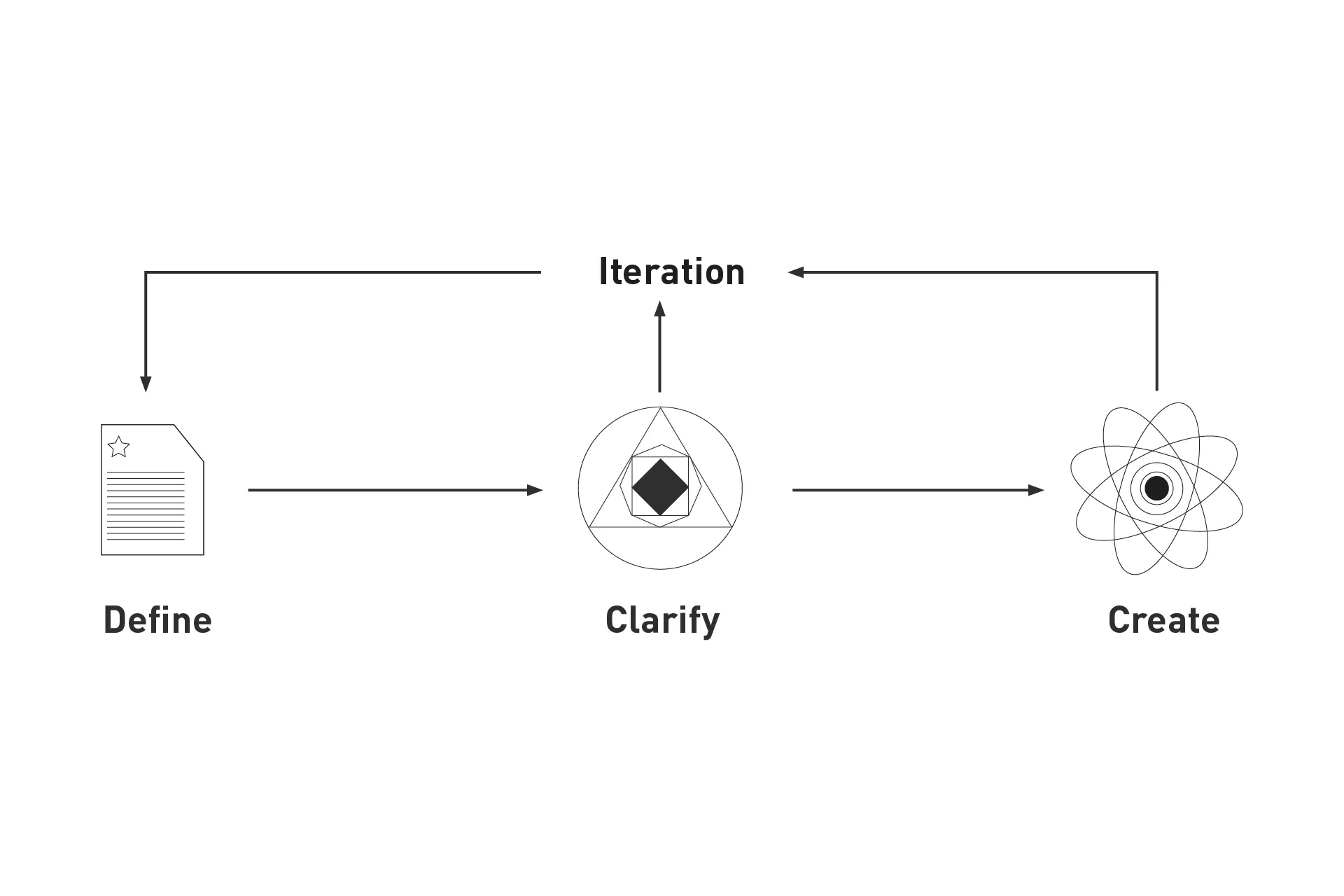
delasign's process
When creating a journey map, it is important to note that they are neither a start nor an end.
They should serve as a means to learn more about your target audience, what works and what does not and should ultimately help refine the hypothesis, feature, product, service or experience as you progress.
It is more than likely that if you transform your target audience's life that the journey map will change.
This is the result you're looking for and will mean that you will have to update the journey map to reflect the new journey when the time comes, with the vision of further enhancing their lives.
Journey maps are also capable of demonstrating that you should not pursue a feature or a product, service or experience - and that's OK.
Looking to learn more about Research and Strategy?
Search our blog to find educational content on research and strategy.
